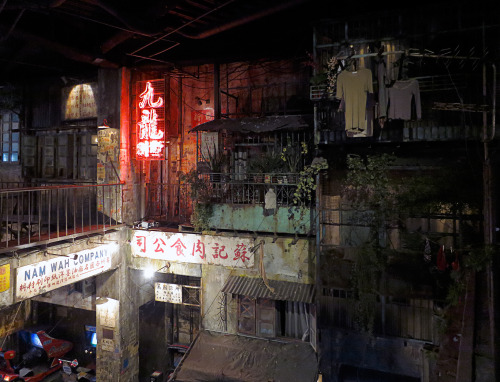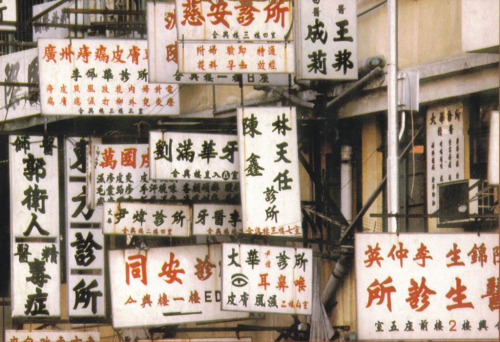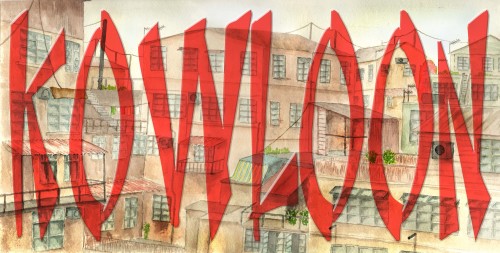

From around 1100 AD, at the time of the Song Dynasty, a fortress had been built on the site in order to secure the trade in salt. When the Japanese were defeated in the Second World War, the Hong Kong Government announced their intention to reclaim jurisdiction over what became known as the ‘Walled City of Kowloon’ and thousands of people flocked there in the hope of gaining the protection of the Chinese. The shanty town grew rapidly during the 1950’s and everything that a city could contain existed there, child welfare clinics by day shared the same space with drinking dens and nightclubs. Across the narrow alleys, ran cables that supplied the city with electricity which had been illegally connected at some place outside of it’s confines. Around the perimeter were the premises of numerous unlicensed doctors and dentists who existed without fear of prosecution.
The Hong Kong Police eventually claimed jurisdiction within Kowloon after a murder trial. Workshops made fake fashion items that closely resembled the high value designer goods that were only available in the department stores of Hong Kong. Smart restaurants bought food items manufactured at a fraction of the normal price and often in less than hygienic circumstances, from tiny workshops that co-existed with rats and open sewers, often with a small number of workers that laboured in dangerous conditions for long hours with small financial reward.
The vast majority of people who lived in the Walled City were honest and law abiding but for some, crime became their only option. The living conditions had become unacceptable to the Hong Kong Government as had the unsavoury reputation that the walled city had gained for itself, and proposals for demolition were announced in the late 1980’s. Generous financial compensation was paid to Kowloon residents although the millions of dollars that had been set aside for this was considered by some to be too little, many stayed on until they were forced to leave.
“Kowloon” by Simon Thompson @tunnelbreeze



This comment has been removed by a blog administrator.
ReplyDelete